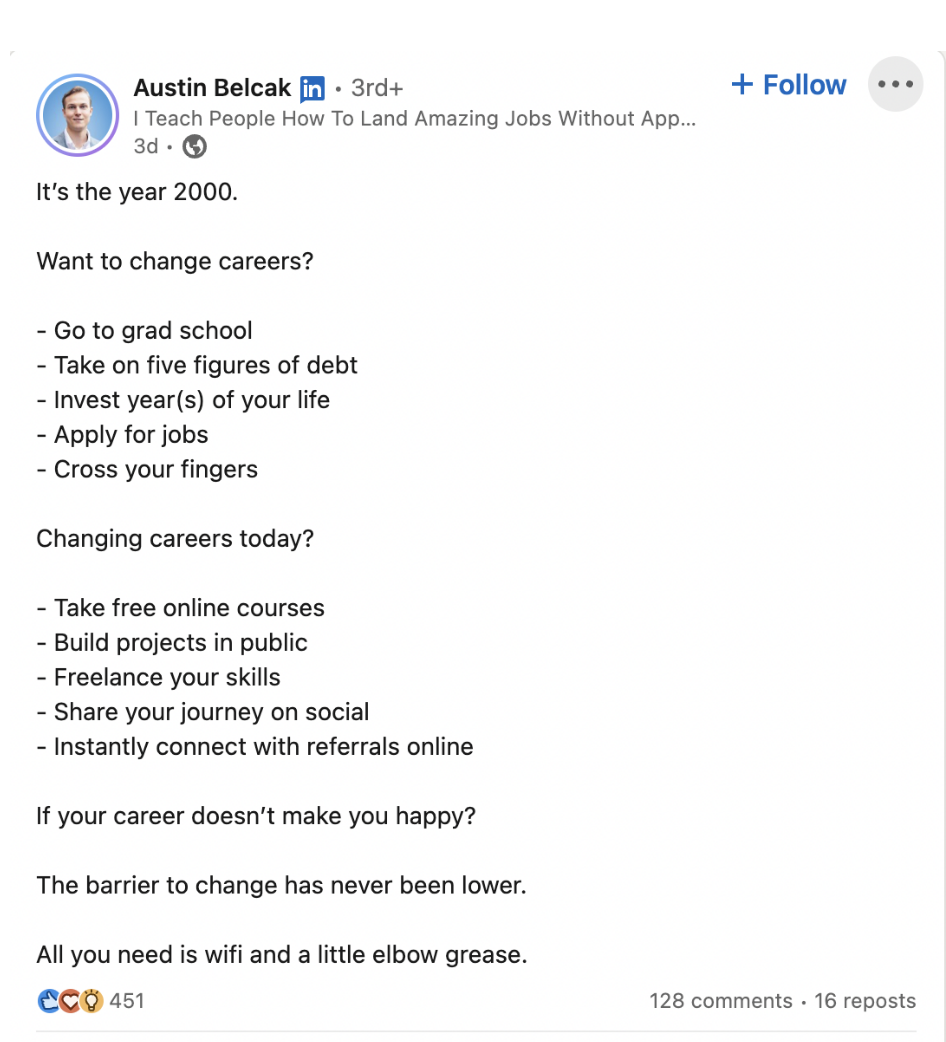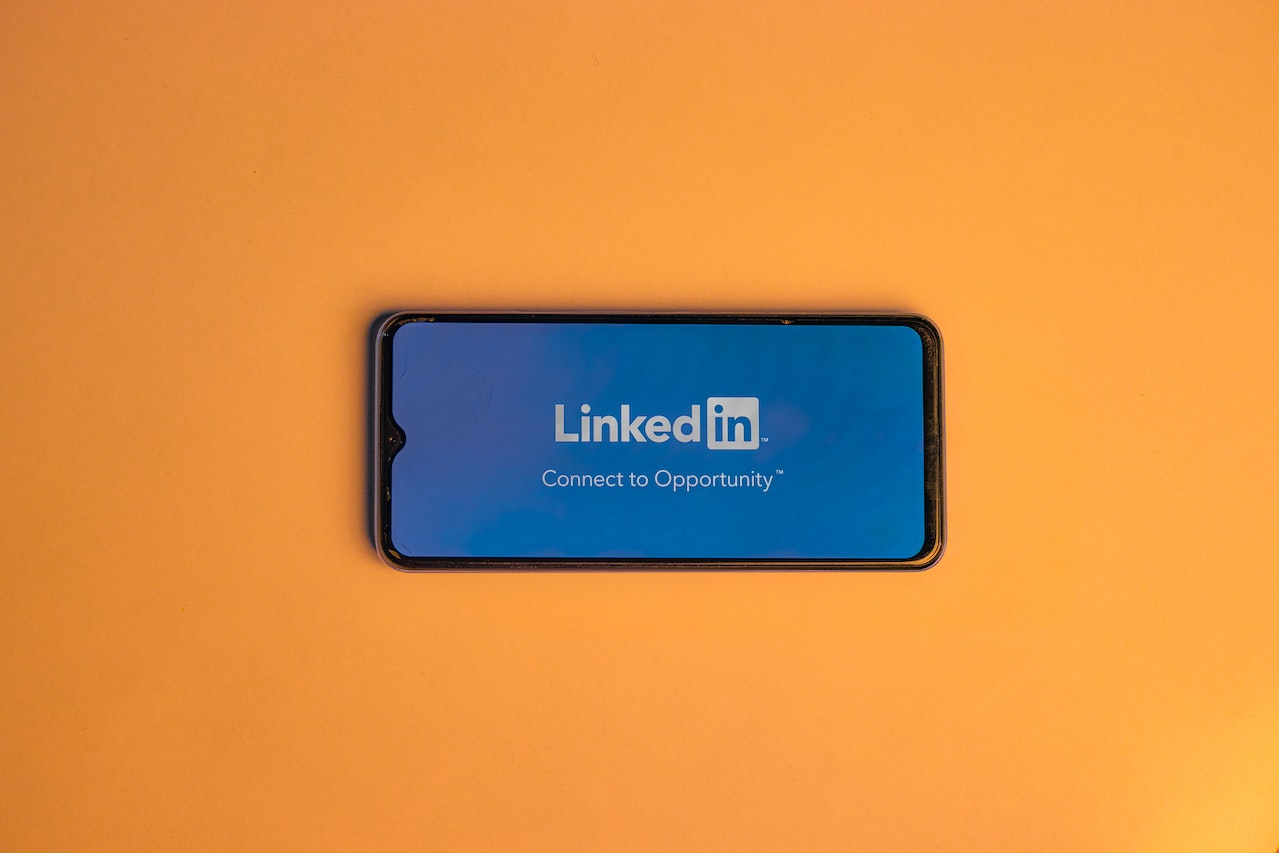LinkedIn is a unicorn in the land of social media sites.
In many ways, it’s the perfect amalgamation of Facebook’s social networking capabilities with Twitter’s poignant messaging.
It’s why 97% of B2B marketers use LinkedIn for their content marketing campaigns.
However, it can be difficult for many wanna-be thought leaders to market themselves through all of the noise on LinkedIn.
That’s why ContentMender offers LinkedIn marketing services to help business leaders become thought leaders and stand out from the crowd. Our services include long-form and short-form LinkedIn profile posts, as well as optimization and promotion strategies to expand your brand.
Our LinkedIn professional writing services offer you:
- Authoritative writing guaranteed to make you connect with your audience.
- Long-form content designed to illustrate technical and topical authority.
- Optimization strategies guaranteed to maximize your audience reach.
- Engagement strategies designed to connect with other thought leaders.
- Editing services to ensure all written content is grammatically correct.
If you’re looking to grow your LinkedIn follower count, expand your brand’s reach, and learn creative ways to engage with professionals over LinkedIn, read more to develop a sound LinkedIn content marketing strategy with insights from ContentMender.
Benefits of LinkedIn Content Marketing
- Massive User Share
LinkedIn boasts over 875 million members globally and over 194 million in the US. That means almost 90% of adults in the US use LinkedIn.
- Curated Audiences
Unlike more informal social networks, LinkedIn is a network designed for professionals, job seekers, and entrepreneurs. Its mission statement reads: “connect the world’s professionals to make them more productive and successful.”
- Brand Building Opportunities
Harnessing the power of LinkedIn’s reach with your own curated audience allows you to build a massive and loyal following for your professional brand.
- Establish Thought Leadership
Build a personal brand as a thought leader by writing thought leadership content that conveys topical authority and appeals to your audience.
- Find Business Opportunities
Networking over LinkedIn presents many valuable business opportunities, from connecting with job seekers to finding business or investment partners for your firm.
- Increase Native Website Traffic
LinkedIn is a great supplement to your overall marketing strategy and can help build traffic to your native website or social media accounts.
Tips for Writing LinkedIn Posts
Developing your LinkedIn content strategy involves creating a curated mix of long-form content, short-form posts, and shares of other people’s content.
Writing short-form content on LinkedIn is about getting as much engagement as possible. If you follow any prominent figures on LinkedIn with an established audience, you’ll probably notice that they write a lot of posts like this:

Source: https://www.linkedin.com/feed/update/urn:li:activity:7008069452139216896/
As you noticed, the content is engaging, easily digestible, and thought-provoking.
Writing LinkedIn content requires the same strategies as writing for Twitter or your personal blog, but with an added emphasis on quick scrolling and hyper-specific audiences.
With that in mind, here are a few tips for writing engaging content on LinkedIn.
- Capture attention with gripping headlines
Your first sentence acts as the headline for why people should read your post. Use creative hooks like questions, startling facts, quotes, storytelling, and trending discussion to capture the reader’s attention.
- Ask thought-provoking questions
Keep the reader engaged long after they’ve read your post by forcing them to reflect on something you wrote. For example, finish a post by asking, “will this information change your perspective on ‘X’ and, if not, why?”
- Emphasis concise diction
Use short, command sentences to deliver a powerful message without the wall of text. Remember, LinkedIn is a social media site, so you’ll encounter a lot of mindless scrolling.
Don’t overwhelm readers with large blocks of text that require more concentration than most people are willing to give.
- Break up text to keep it engaging
Use spacing, bullets, and numbered lists for specific instruction and to keep posts free of clutter.
- Add instructions to posts
Encourage engagement by asking people to comment, like, or share a post.
- Tag followers and influencers (optional)
Put your post directly in front of another audience and spark a conversation in the comments by tagging a fellow thought leader.
Most LinkedIn professionals are eager to engage with an audience, so they will be more than willing to respond.
- A/B test media
While block text is effective for most thought leaders, consider experimenting with photos, videos, and links to see how they impact engagement.
- Use emojis to keep posts light and engaging
Emojis 😱reduce the need for unnecessary verbiage 🥱, communicate friendliness 👋, and help us form emotional connections to their authors ♥️.
- Add hashtags for categorization
Like Twitter, hashtags and keywords help your posts trend for specific topics people may search on LinkedIn, increasing their reach.
- Be authentic
LinkedIn followers appreciate authenticity, which makes storytelling and personal information especially appealing. Whether you’re sharing insight, providing motivation, or promoting your brand, be authentic and avoid being over “salesly”–lest you risk hurting your credibility.
The Benefits of Writing Long-Form LinkedIn Content
Another new feature of LinkedIn, which is still underutilized, is the ability to write long-form posts via publishable PDFs on a user’s account page.
Known as “Articles for Pages,” this new feature allows publishers to write blog-style posts directly to LinkedIn without restrictive character counts.
Blog posts allow for embedded media, such as videos and photos, and are published directly to authorized account pages. From there, posts can be boosted for greater visibility in LinkedIn’s news feed and shared among those who find your post interesting.
The benefits of using Articles for Pages include:
- Develop higher thought leadership: Have more to say on a topic than just a few sentences? Make an entire post to educate and inform your audience.
- Acquire greater visibility on LinkedIn: While you may be thinking, why not share a link to my blog on LinkedIn? Blog links don’t get as many clicks as pages or posts published to LinkedIn. Plus, Articles for Pages can be boosted or promoted for greater visibility.
- Reach the right audience: Publishing directly to LinkedIn allows you to reach a curated audience of professionals that may offer more qualified organic lead generation than organic search.
- Publish brand or business-related content: Publishing business updates on your blog limits its reach. So why not publish updates so your most active followers on Linkedin can see them?
5 Steps Develop Your LinkedIn Content Strategy
Now that we know the basics of posting on LinkedIn, it’s time to develop a killer content marketing process to maximize our results on the platform.
1. Create Marketing Goals (Why)
The first step of any marketing campaign is goal setting.
But why?
Well…
- Goal setting allows us to establish KPIs to measure our success
- Goal setting keeps topics focused on the goals at hand
- Goal setting helps us determine the right platforms to use to reach those goals
- Goal setting helps us narrow down our audience to achieve maximum results
- Goal setting makes us more likely to achieve our goals
You may have many goals for using LinkedIn for content marketing, not limited to:
- Increasing your brand’s reach
- Establishing topic authority (i.e., thought leadership)
- Finding networking and business opportunities
- Generating sales via LinkedIn
So determine your marketing goals and decide whether LinkedIn is the best platform to reach those goals.
Then, write down a list of KPIs you wish to achieve using LinkedIn content marketing, such as acquiring more targeted followers or website traffic.
2. Research Your Target Audience (Who)
Secondly, we need to decide who we’re targeting with our LinkedIn content strategy.
Understanding your audience will help you choose the right topics that appeal to that audience segment.
LinkedIn provides several tools, such as Talent Insights and Sales Insights, which enable businesses and publishers to narrow their reach for a specific audience based on some of the following demographics:
- Company size
- Leadership position
- Company department
- Geographic position
Additionally, researching the audiences of other popular thought leaders in your fields can help you glean their content marketing strategies and see what resonates with their audiences.
Once you decide what your audience will consist of (i.e., HR reps, marketers, entrepreneurs, etc.), you can tailor your content to their specific needs.
3. Choose Topics and Conversation-Starters (What)
Third, and perhaps most important, we need to discuss what you will be posting on LinkedIn.
Topic selection ultimately comes down to your target audience and your personal brand.
These same factors should also impact what type of content you share.
For example, LinkedIn allows for several types of posts, including:
- Polls
- Events
- Documents
- Celebrations
- Help wanted
Polls can be a great way to cultivate and spark conversations around controversial topics by breaking the ice.
Announcements and help-wanted posts are great for searching for business opportunities.
In terms of third-party content, we recommend sharing relevant content that appeals to your followers so you can achieve maximum engagement.
Play around with different forms of content and dig into the analytics to see what types of content yield the highest engagement.
4. Create a Publishing Schedule (When)
Creating a strategic content calendar for your LinkedIn posts will maximize your engagement.
While posting every day on LinkedIn will not necessarily hurt your visibility, it may clog up users’ feeds and limit the visibility of other posts.
So determining when to post on LinkedIn is an easy cheat to maximize visibility.
According to LinkedIn’s findings, shares posted between 12 pm-9 pm Wednesday, Saturday, and Sunday receive the highest engagement.
While there is no hard rule of how many times you can post weekly, limiting posts to once daily is considered optimal. Additionally, mix up posts with photos, third-party content, polls, and more to keep audiences engaged and expecting something new every time.
5. Integrate LinkedIn into Your Overall Marketing Strategy (Where)
Finally, it’s important to realize that LinkedIn may be just one part of your overall marketing strategy.
Determining where to share content and when to LinkedIn will help you maximize the platform to your advantage.
For example, cross-sharing LinkedIn posts on Twitter could be an easy way to double your reach.
On the other hand, it doesn’t always make sense to share every blog post you publish on your website to LinkedIn.
However, there are instances where creating LinkedIn articles could be better from a business standpoint.
As we said, incorporating LinkedIn into your marketing strategy requires understanding your audience and your brand.
Bonus: Engage with Your Audience
We can’t fail to mention that part of your strategy should include responding to users who comment and share your posts to cultivate further engagement.
Remember, the goal of a lot of content is to spark conversation around a topic. Take the lead by responding to followers who comment on your post and even by commenting on other thought leaders posts to increase your follower count.
Using LinkedIn Analytics
Monitoring analytics helps you discover what LinkedIn content strategy works for your brand and what doesn’t.
Note: For Professional and Business Accounts only.
Click on the ‘Me’ icon at the top right of LinkedIn’s feed and then click on Posts and Activity.
In the lower right-hand corner of each post, you can click View Analytics to see several different statistics, such as:
- Post impressions
- Reactions
- Shares
In addition, if you own a business page, you’ll be able to track metrics for various inputs, such as the demographics of your followers, the discovery of your content, and the number of unique visitors to your business page.
Use data to inform you about what content is reaching your marketing goals and what needs tweaking.
Using Ads to Increase Reach
If you want to expand your reach beyond your follower count, LinkedIn does provide advertising options.
For example, LinkedIn provides the following ad mediums for Sponsored Content, including:
- Single image ads
- Carousel ads
- Video ads
- Document ads
- Event ads
There are additional ad formats you can experiment with, such as dynamic ads and text ads to promote your brand or a specific piece of content.
Using the advertising platform is especially helpful for gathering sales and data analytics available via LinkedIn’s Insights platform so you can learn more about your audience.
Benefits of Working with LinkedIn Ghostwriters
If you’re struggling to create topics or reach more followers with your content, hiring content ghostwriters is a great strategy to create effective content that appeals to your audience.
Working with ghostwriters for your LinkedIn content marketing campaign offers the following benefits.
- Craft high-quality content that sparks conversation
- Gain detailed audience insights using industry-leading tools and research methods
- Leverage proven strategies that have yielded successful engagement for other thought leaders
- Save time on planning and writing posts
ContentMender offers LinkedIn ghostwriting for short and long-form articles, as well as white label services, to help you build brand awareness and cultivate thought leadership.
Contact us for a quote and to see how we can help expand your brand on platforms like LinkedIn and beyond.



